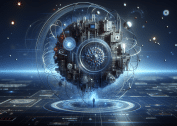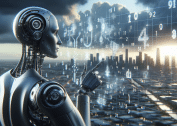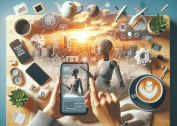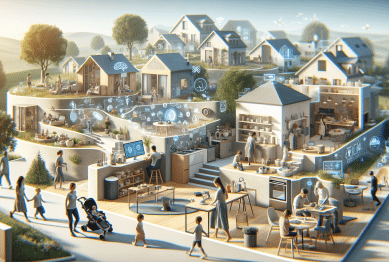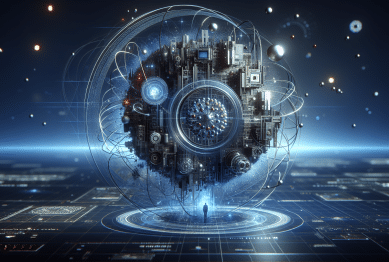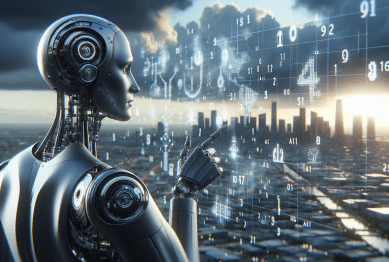Artificial Intelligence is changing everything. Discover surprising roles, exciting advances, and everyday impacts of AI in this detailed guide. Learn how algorithms, ethics, and real-world examples are shaping science, technology, and daily experiences across the globe.
Understanding Artificial Intelligence in Everyday Life
Artificial intelligence (AI) is no longer a futuristic concept. Algorithms increasingly shape decisions, from what people see online to how customer service works behind the scenes. The science behind these processes brings together machine learning, natural language processing, and problem-solving techniques. AI influences suggestions for movies, recommends new products, and even helps filter out unwanted emails. All this happens almost invisibly, making daily life just a bit smoother for many.
The influence of artificial intelligence stretches far beyond simple recommendations. It now powers personal assistants that recognize spoken language, supports navigation systems with predictive traffic insights, and identifies patterns in large datasets within seconds. This can mean faster medical diagnoses, improved logistics, or instant translations. For many, these improvements blend into their routines unnoticed, even as they revolutionize habits and expectations. AI, though sometimes misunderstood, brings subtle but profound changes.
AI operates through vast networks of data, learning continually from new information. Businesses, researchers, and governments adopt AI not just for efficiency, but to tackle challenges that previously seemed impossible. Algorithms help detect fraudulent financial transactions, optimize energy use in buildings, and predict disease outbreaks. These technologies sit quietly at the core of many systems, changing lives while remaining largely invisible to the average person. The true reach of AI continues to expand, often in unexpected ways.
The Surprising Places AI Is Already Used
Many encounter artificial intelligence where it’s least expected. In agriculture, advanced image recognition helps identify crop diseases and track soil health, transforming farming practices. Environmental scientists deploy AI models to predict climate patterns, spot illegal deforestation from satellite data, and protect endangered species. From grocery store shelf stocking to smart home devices adjusting lighting automatically, AI works in surprisingly practical ways that improve everyday routines. The reach grows with each innovation.
In the financial sector, AI-driven fraud detection protects bank accounts by noticing unusual activity in real time. Automated trading algorithms analyze market trends at speeds humans cannot match, adjusting investments based on complex calculations. Meanwhile, retail businesses use predictive analytics to optimize supply chains, reduce waste, and serve customers more efficiently. Even music playlists and shopping suggestions are guided by constantly improving AI recommendation engines, based on sophisticated pattern analysis.
Healthcare is another domain benefiting from unseen AI assistance. Algorithms support early disease detection from medical imaging, help hospitals anticipate patient admission surges, and drive the development of tailored treatment plans by finding subtle patterns in patient data. These advances aim for better outcomes and greater accessibility, while raising crucial questions about privacy and data security. Across all sectors, AI’s presence grows more influential and, at times, more discreet.
How AI Algorithms Learn and Improve
Core to artificial intelligence is machine learning. Algorithms analyze enormous sets of data, identifying trends, making predictions, and adjusting strategies as they gather feedback. This process, known as training, enables machines to achieve accuracy that improves over time. Deep learning is one method, using layers of neural networks that mimic human brain structures to analyze information more deeply. As the training data grows, so does the nuance with which AI tools understand complex scenarios.
Supervised and unsupervised learning are two approaches AI takes. In supervised learning, algorithms are presented with labeled data and learn to predict outcomes based on prior examples. In unsupervised learning, they identify patterns without explicit instruction, clustering similar data points and detecting hidden relationships. Reinforcement learning takes a different route—AI receives rewards or penalties based on its actions, encouraging positive behaviors. Each approach has strengths and shapes how AI systems adapt to changing situations.
One intriguing aspect is the concept of bias in artificial intelligence. Algorithms reflect the data they consume, which sometimes consolidates existing prejudices or gaps in information. Researchers are developing fairness strategies to identify and reduce these biases. Transparency and continuous evaluation are encouraged so AI systems can serve society justly. This process highlights the importance of interdisciplinary collaboration among computer science, ethics, and social sciences in the future development of reliable AI.
Current Advances and Ethical Challenges in AI
Artificial intelligence advances rapidly, but with progress comes dilemma. Cutting-edge applications like facial recognition, autonomous vehicles, and generative AI models spark debates about rights and responsibilities. The automation of work can improve efficiency but raises questions about labor displacement. AI-generated media and deepfakes blur lines between reality and fiction. Navigating these shifts requires careful regulation and transparent design choices, along with ongoing dialogue between industry and the public sector.
Privacy remains a central issue in AI. Powerful algorithms can draw conclusions from seemingly innocent data points, sometimes revealing sensitive information unintentionally. Regulations such as data minimization, explainable AI, and consumer consent guides how organizations collect and use personal data. There is a push for more robust accountability measures and regular audits, ensuring responsible use and supporting public trust. Open-source projects and independent oversight play growing roles as AI becomes further embedded in infrastructure.
The ethical debate extends to AI’s role in decision-making processes. From lending decisions to legal judgments, algorithms can reinforce or challenge social inequalities. Experts propose diverse representation in AI design and frequent impact assessments. The ongoing evolution of ethical frameworks seeks to balance innovation with social justice, transparency, and safeguarding human values. Global cooperation and interdisciplinary collaboration remain key to integrating ethical considerations into the rapidly changing AI landscape.
The Future: What’s Next for AI in Science and Technology?
Artificial intelligence is positioned to fundamentally reshape scientific research, medicine, education, and sustainability efforts. Its future lies in ever-more granular data analysis, improved energy efficiency through smart grids, and groundbreaking research in genomics, materials science, and astronomy. AI tools help scientists make connections between seemingly unrelated fields, inspiring interdisciplinary breakthroughs and expanding the potential for discovery. As AI grows more powerful, the possibilities remain vast and awe-inspiring.
In education, adaptive AI-powered learning platforms adjust content to suit individual students’ needs, making personalized learning possible on a large scale. In healthcare, predictive analytics intersect with precision medicine, tailoring treatment choices and preventive strategies to unique genetic profiles. Transportation networks evolve, guided by intelligent algorithms that manage self-driving vehicles, optimize routes, and improve safety. Experts suggest a continued blending of human creativity and machine capability as technology advances.
Stakeholders emphasize the need for ethical, inclusive, and transparent AI development. Collaborative research, public engagement, and regulatory evolution can help society navigate risks and benefits. As artificial intelligence becomes more intertwined with everyday experiences, its hidden contributions may surprise, challenge, and ultimately benefit people in ways that are only beginning to be understood. The story of AI is far from complete, and its next chapters await with promise and complexity.
References
1. European Commission. (n.d.). Ethics guidelines for trustworthy AI. Retrieved from https://digital-strategy.ec.europa.eu/en/library/ethics-guidelines-trustworthy-ai
2. National Institute of Standards and Technology. (n.d.). AI Risk Management Framework. Retrieved from https://www.nist.gov/itl/ai-risk-management-framework
3. Stanford University. (n.d.). Artificial intelligence index report. Retrieved from https://aiindex.stanford.edu/report/
4. Harvard University. (n.d.). Artificial intelligence and life in 2030. Retrieved from https://ai100.stanford.edu/2016-report
5. World Economic Forum. (n.d.). What is artificial intelligence? Retrieved from https://www.weforum.org/agenda/2016/10/what-is-artificial-intelligence
6. United Nations Educational, Scientific and Cultural Organization. (n.d.). Artificial Intelligence and education: Guidance for policymakers. Retrieved from https://unesdoc.unesco.org/ark:/48223/pf0000376709



